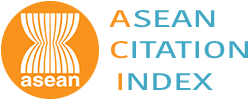Untargeted Metabolomics of the Sea Cucumber, Bohadschia marmorata (Jaeger, 1833)
DOI:
https://doi.org/10.61310/mjst.v22i1.1957Keywords:
holothurians, metabolites, Philippine sea cucumber, sea cucumber spicules, triterpenoid saponinAbstract
The marine invertebrates such as sea cucumber are regarded as sources of diverse bioactive compounds with promising health and nutritional benefits. Many commercially traded sea cucumber species have been explored, yet none of the local low-value types in the province of La Union, Philippines. This study aimed to establish a baseline metabolomic profile of Bohadschia marmorata (Jaeger, 1833). The identification of compounds in its body wall utilized an Orbitrap MS-based approach. Metabolites were annotated using Compound Discover 3.2, and similarity searches were performed from online databases. Eleven putatively identified compounds, which included saponin (3beta,5xi,9xi)-28-Hydroxy-28-oxoolean-12-en-3-yl-beta-Dgalac topyranosyl-(1-3)-[beta-D-glucopyranosyl-(1-2)]-beta-D-glucopyranosiduronic acid, fatty acids and their byproducts such as eicosanoid (11,12-Epoxy-(5Z,8Z,11Z)-icosatrienoic acid) and prostanoids (13,14-dihydro Prostaglandin F1?; 13,14-Dihydro-15-keto Prostaglandin A2), dicarboxylic acids (tetradecanedioic acid; dodecanedioic acid; suberic acid; NP-001596), and amino acid (4-Oxoproline). The metabolic profile of the B. marmorata body wall showed a diverse group of representative metabolites common among holothurians associated with innate defense mechanisms, structural composition, and products of metabolic pathways. There is, however, a need to further isolate these compounds using other methods and test their biological activities.










